



SELECTED
ISSUE
|
|
Leisure Management - Strength revolution

Special report

|
|
| Strength revolution
|

Strength training is booming, in part due to various government’s
guidelines that recommend it for all ages, with new offerings coming in
the form of hardware, tech and programming, as Steph Eaves reports
|

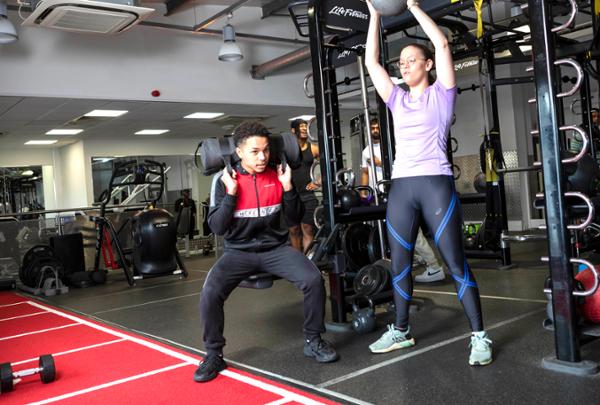
Mytime Active runs junior lifting clinics to tech young people to lift safely Mytime Active
|
|
Luke Townsend
Technogym

photo: Technogym
We’ve seen an increased requirement for a new era of strength training solutions, both in the gym and outdoors.
With growing demand for a personalised strength training experience, traditional gym floor strength areas are changing and operators are focusing on delivering more personalised and results-driven experiences throughout, taking zonal approaches to layout and developing multiple offerings and revenue-generation opportunities to meet the needs of members.
The demand for our connected strength products, such as Biocircuit and Biostrength – which guide users through the entire workout – have increased significantly. Consumers want variety, regardless of their fitness goals, and the requirements and specifications we’re receiving from customers, partners and the industry is reflecting this.
How can operators improve their strength offering?
With strength training gaining in popularity, it’s essential to adopt a multi-faceted approach to making it accessible for all. Firstly, the strength offering should provide variety, combining fixed resistance, plate loaded and functional training tools. This ensures every user can find suitable equipment, regardless of their ability, fitness and confidence levels.
Linked to this is the crucial role education plays in making strength training accessible. By delivering a recurring programme of workshops, operators can dispel myths and teach correct exercise techniques to prevent injury and promote progression.
Focusing on community engagement and support are also key to success. Building a supportive community can boost motivation and create a sense of belonging. Finally, tracking progress and celebrating success provides positive reinforcement, keeping users motivated throughout their strength training journey.
Where have you seen strength done well?
Celtic Manor (www.celtic-manor.com) chose to implement the Technogym Biostrength range, which includes the patented Biodrive system, using aerospace technology powered by AI to ensure maximum muscular activation, as well as correct exercise setting and execution. Steve Hamblin, head of leisure and activities at Celtic Manor Resort, told me they’re seeing people who haven’t used the gym for a while coming back to their health clubs to check out the improvements, while also getting lots of enquiries for new memberships.
Luke Townsend is education manager, training and format specialist at Technogym
It’s essential to adopt a
multifaceted approach
to strength training
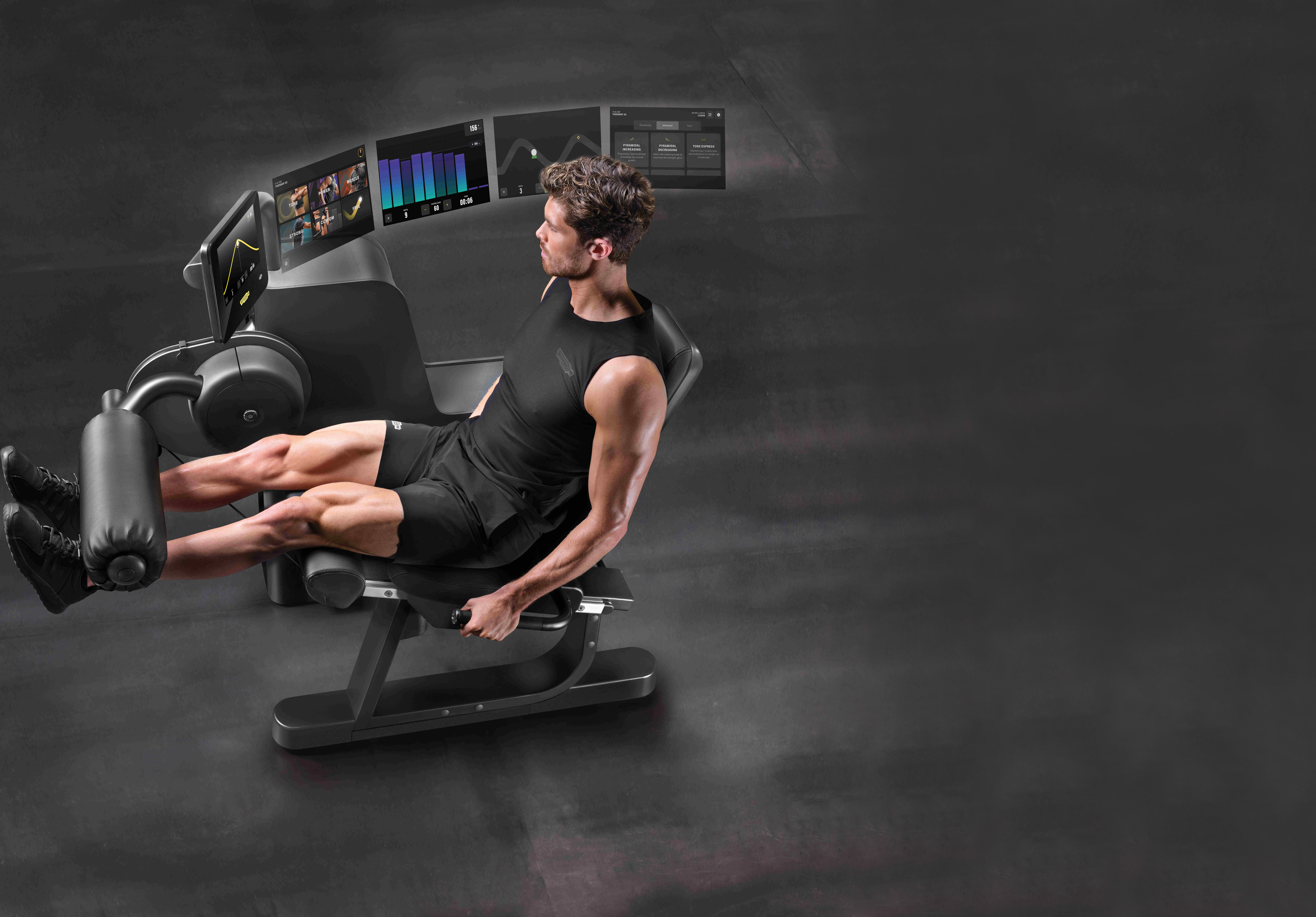
Technogym’s Biostrength guides users through their workout / photo: Technogym
Travis Vaughan
Core Health and Fitness
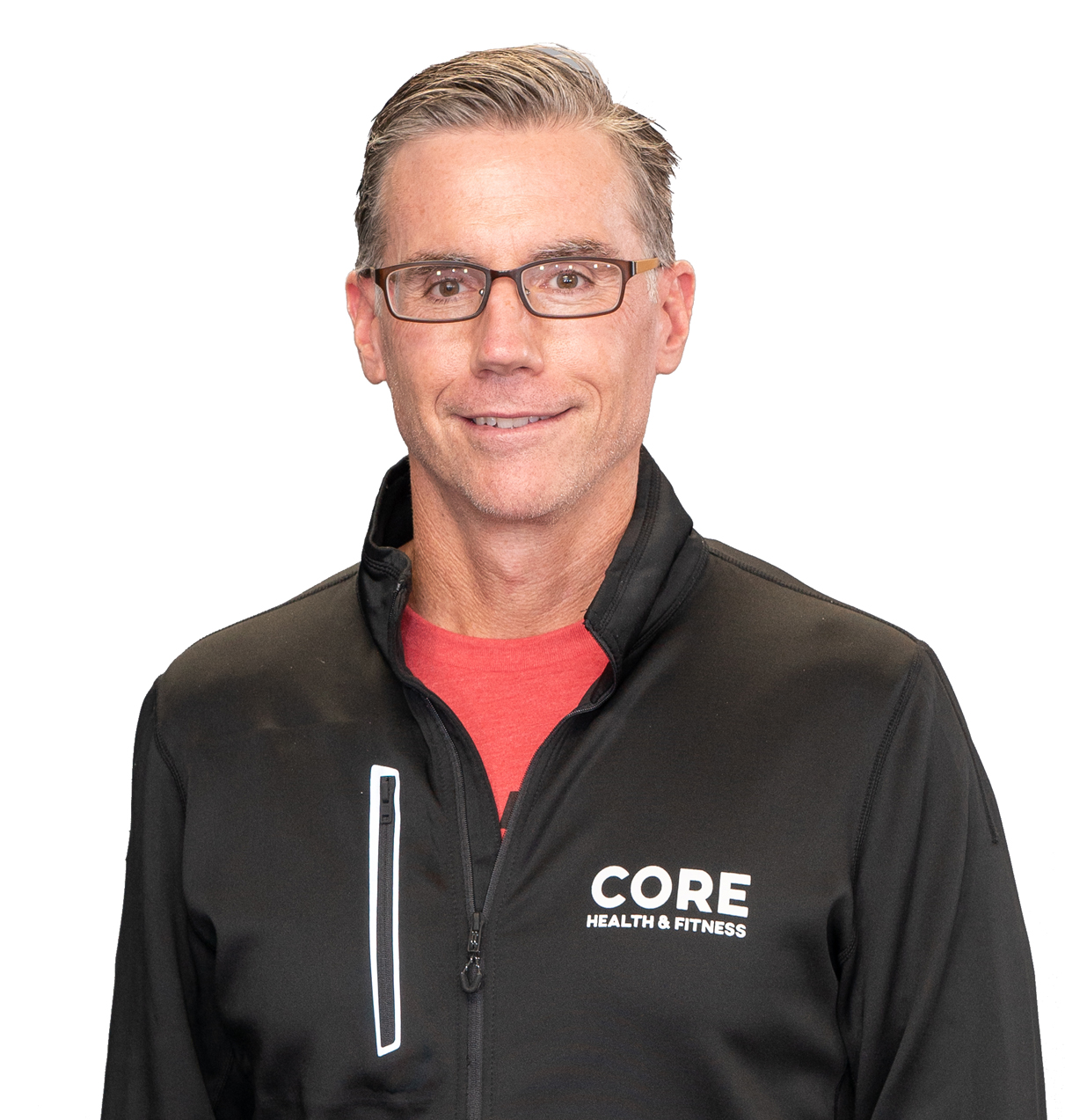
photo: CORE HEALTH and Fitness
It’s no surprise that many organisations are elevating the critical importance of strength training as part of a complete physical fitness routine. The science is clear that maintaining and increasing lean muscle mass is critical to overall health and especially important to exercisers over the age of 50, in whom lean muscle loss can contribute to both strength and mobility issues.
A combination of government recommendations, that are backed by science, the renaissance of free weight training, a surge in Olympic-style lifting and emphasis on functional training, has resulted in fitness facilities experiencing a radical reimagining around strength.
How can operators improve their strength offering?
What was old is new again in the free weight training areas of facilities, with a large migration of all demographics towards strength. Driven by popular trends and social media, the free weight section of the gym is the place to be if you’re serious about fitness. If you’re a newer fitness enthusiast, the attraction point is small group functional training with rigs, accessories and free weights.
If you’re a new facility developer, you need to understand the trends and the science and design your new space to accommodate the growing population and traffic flow in the free weight, plate-load and functional spaces. If you’re an existing facility operator, you need to re-evaluate your space, understand the traffic flow, remove unused or low-traffic areas and add space to meet the needs of these escalating trends.
Reinvention has to happen every decade or so in the health and fitness industry to leverage and capitalise on the science and trends that it drives. This isn’t a new phenomenon – it’s happened numerous times over the decades.
Where have you seen strength done well?
verlast Gyms (www.everlastgyms.com) is a great example of how the landscape has changed and is changing. One visit to its clubs and you’ll see a new look and feel, supplemented by larger free weight and plate-loaded areas, numerous half-racks and platforms and an emphasis on small group functional training.
What was
old is new
again in
free weight
areas
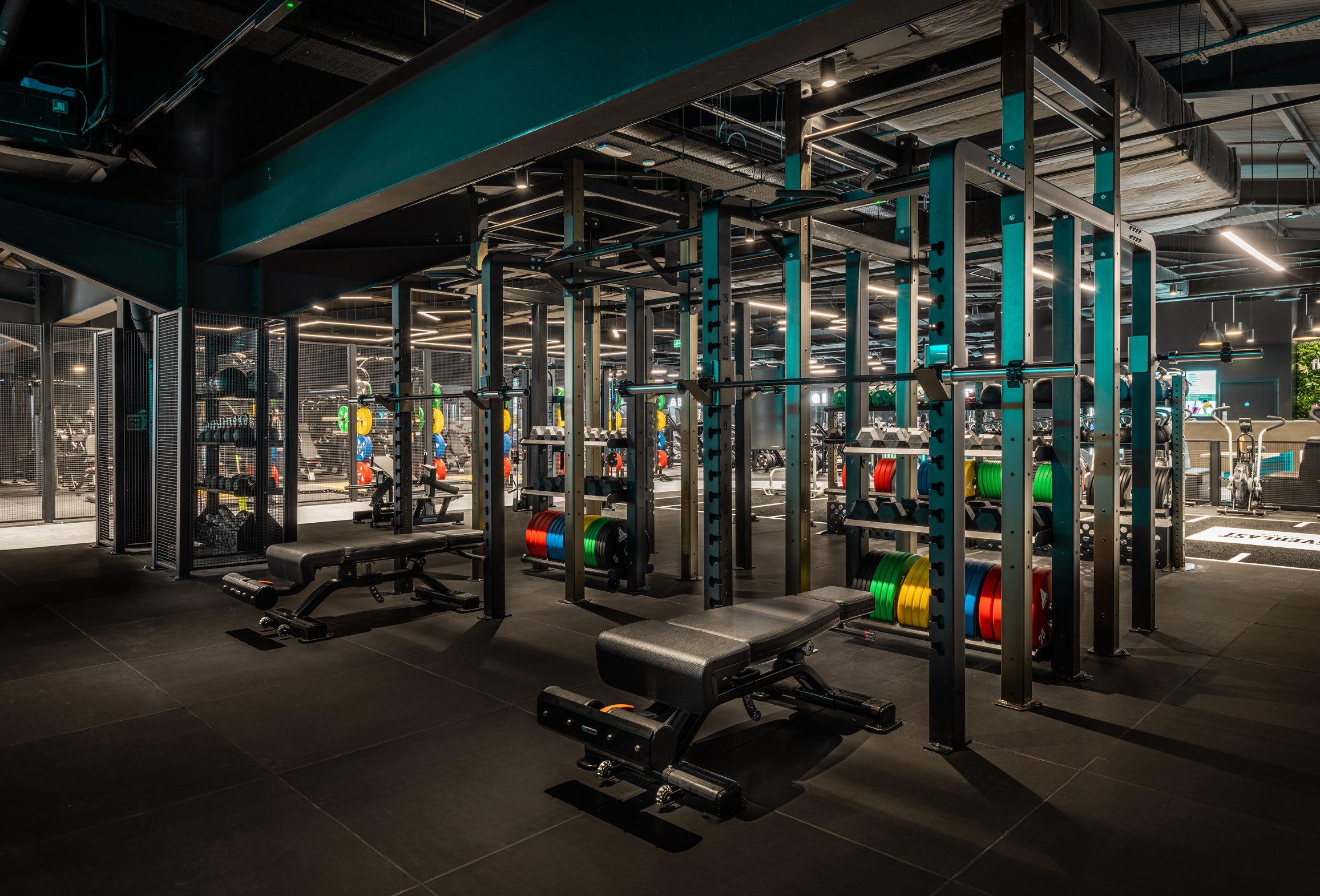
Everlast Gyms have a new look and feel and upgraded strength offering / photo: Everlast Gyms
Martin Franklin
Les Mills

Photo: LES MILLS
Operators have long been the standard-bearers when it comes to supporting strength training and helping diverse groups of individuals reap the rewards.
I think government guidelines are more ‘effect’ than ‘cause’, as official recommendations tend to be a trailing indicator of what’s happening in society.
I’d posit that those recommendations were at least partly an acknowledgement of the positive impact fitness facilities are having on society.
How can operators make strength accessible?
There are practical considerations, such as how many people you can service at one time – especially with strength training such a strong trend right now and operators reporting lengthy queues for squats racks and benches.
There’s also the support element: ensuring members have the knowledge and confidence to lift safely and effectively. It won’t shock you to learn that I see strength-based group training as an ideal solution to this.
Through high-quality classes, you can service more strength fans at once, manage footfall and reduce bottlenecks on the gym floor, while ensuring well-trained Instructors are on hand to encourage and educate members to get the most from their strength sessions and keep them coming back.
Where have you seen strength training done well?
We saw recently, both in HCM and in the national press, that The Gym Group is cutting back on treadmills and adding more strength equipment to cater to the growing numbers of women who prefer to pump iron, so that will be a story to watch closely as operators navigate this growing trend.
Another operator that’s been doing this well for some time is Village Gyms. The forward-thinking chain has invested in adding 30 per cent more weights into its studios, along with programming such as our new Les Mills Strength Development programme to attract and engage younger members. It’s also been training more instructors to deliver these sessions.
Village Gyms is also running activations and competitions on the gym floor to engage younger members and help steer them towards the studio – again serving to manage footfall and unlock the retention benefits of engaging these members in community-based strength training.
Martin Franklin is CEO of Les Mills Europe
Through strength-based group training you can reduce bottlenecks on the gym floor and manage footfall

Les Mills has launched a new programme called Strength Development / photo: LES MILLS
Matthew Januszek
Escape Fitness

photo: ESCAPE FITNESS
We’ve definitely seen an uplift in strength training and the installation of strength-focused equipment worldwide.
More thought is also going into gym design, equipment and space-saving solutions.
In regards to equipment we’ve seen more squat racks and octagon frames being installed, with a corresponding reduction in the size of cardio training areas. Also worth noting is the increase in women taking up strength training.
Although the UK government added strength training to its physical activity recommendations in 2019, I’m not convinced these changes are all down to these guidelines – social media has had more of an impact in driving this trend, particularly with women being more comfortable striving for a ‘strong not skinny’ mindset.
The benefits of strength training are now more widely recognised, which is a fantastic shift and needs to be accommodated by all operators.
What can they do to ramp it up?
By thinking about their demographic first, because layout and design come from knowing your audience.
Although the growth of strength training is a positive shift, the increase in users can create a bottleneck on the gym floor, especially within the free weight areas. Confident users often want an open floor space and a sociable ‘on show’ aesthetic, whereas less confident users, can prefer screened, or cubicle-based areas where they can train in a less intimidating space – perhaps with digital or in-person coaching readily to hand.
Ensure trainers are educated in versatile methods of strength training, so they can demonstrate that strength benefits can be reached far beyond the free weights, encouraging members to engage with more equipment on the gym floor, or maybe even utilise additional services such as strength-based classes.
We’re looking at the challenges operators are currently facing – for example, backlogs around free weights and squat racks – and at the end of this year we’re launching something to address those challenges.
Where have you seen strength done well?
Gold’s Gym in Northridge, California (www.goldsgym.com/northridge-ca) partnered with us to create a bespoke, standalone ‘Escape Room’, fitted out specifically for strength training. It’s an ultra-modern, boutique, box-style room that combines modern methods of functional training with traditional free-weights and lifting platforms.
It gives members a separate strength area, away from the gym floor and for those who prefer to be in their own zone, there are pods where they’re not in full view.
There’s such a wide variety of equipment that members can step away from the free weights area and discover new ways of maximising their workout, it’s almost like a playground of strength exercise!
Matthew Januszek is co-founder of Escape Fitness and host of the Escape your Limits podcast www.hcmmag.com/EYL
Confident users
want an open floor
space and sociable,
‘on-show aesthetic
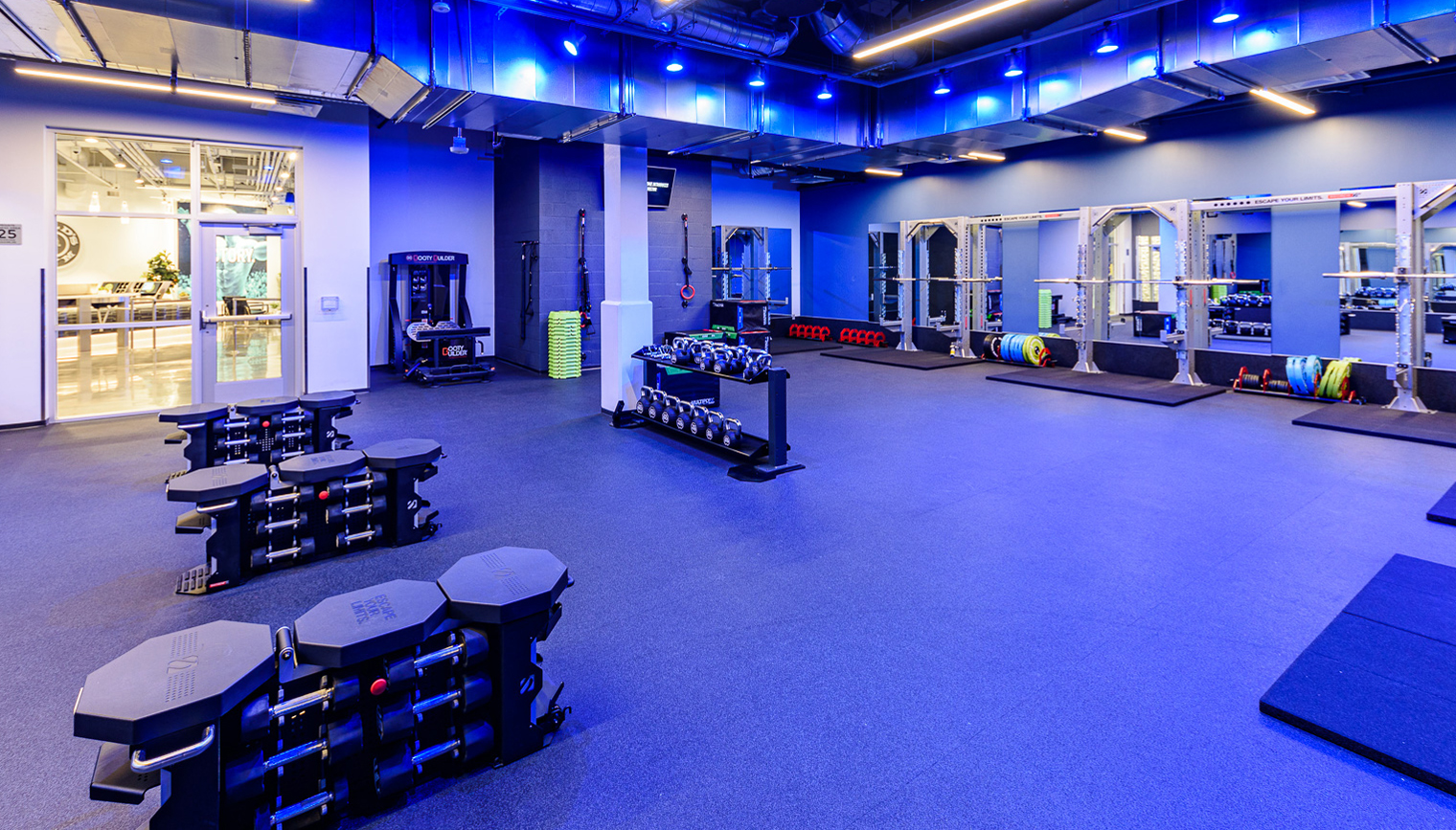
The right layout can minimise backlogs in free weights areas / photo: ESCAPE FITNESS
Phil Horton
Miha Bodytec

photo: Miha Bodytec
We’re seeing new operators emerging and entering the health and wellbeing space off the back of the government’s strength training guidelines and one of the main areas of growth is beyond the traditional health club and gym floor.
Whole body EMS training operators, such as Feel Electric, Surge, Ironbody Fit, Korperform and Vive Fitness, are making strength training more accessible with a micro studio offer on the high street.
We’re also seeing traditional operators collaborating with EMS providers – Surge has recently partnered with Soho House, for example, and Vive Fitness has partnered with The Lanesborough Hotel and Matt Roberts’ Evolution, to make EMS more accessible. The focus is very much on strength for health and longevity, rather than aesthetics.
What can operators be doing?
The key to success is removing barriers and making strength training non-intimidating and easy to access. Whole body EMS training achieves the government strength training guidelines in one 20-minute training session per week – also making it more time-efficient – so we encourage operators to think differently and provide alternatives to strength-based classes or working out with weights.
If we’re truly going to get people into strength training, we need to think outside the box. Whole body EMS is an innovative form of strength training that delivers and can be done anywhere in a club.
Also, if we want to encourage more people to strength train, why not create a different space for them? A holistic, welcoming space, away from the strength area – that not everyone feels comfortable in.
Where have you seen strength training done well?
The Shrewsbury Club (www.theshrewsburyclub.co.uk) introduced a separate EMS studio to encourage more members to benefit from strength training, especially those who don’t venture into the gym floor strength area.
The studio runs using a PT-led approach, offering 30-minute appointments, but still charging the same amount as for a traditional one-hour session. This approach is appealing to a wide variety of members, such as tennis members, new mums, seniors and time-poor clients.
Phil Horton is UK and Ireland country director at Miha Bodytec
We’re seeing traditional
operators collaborating
with EMS providers
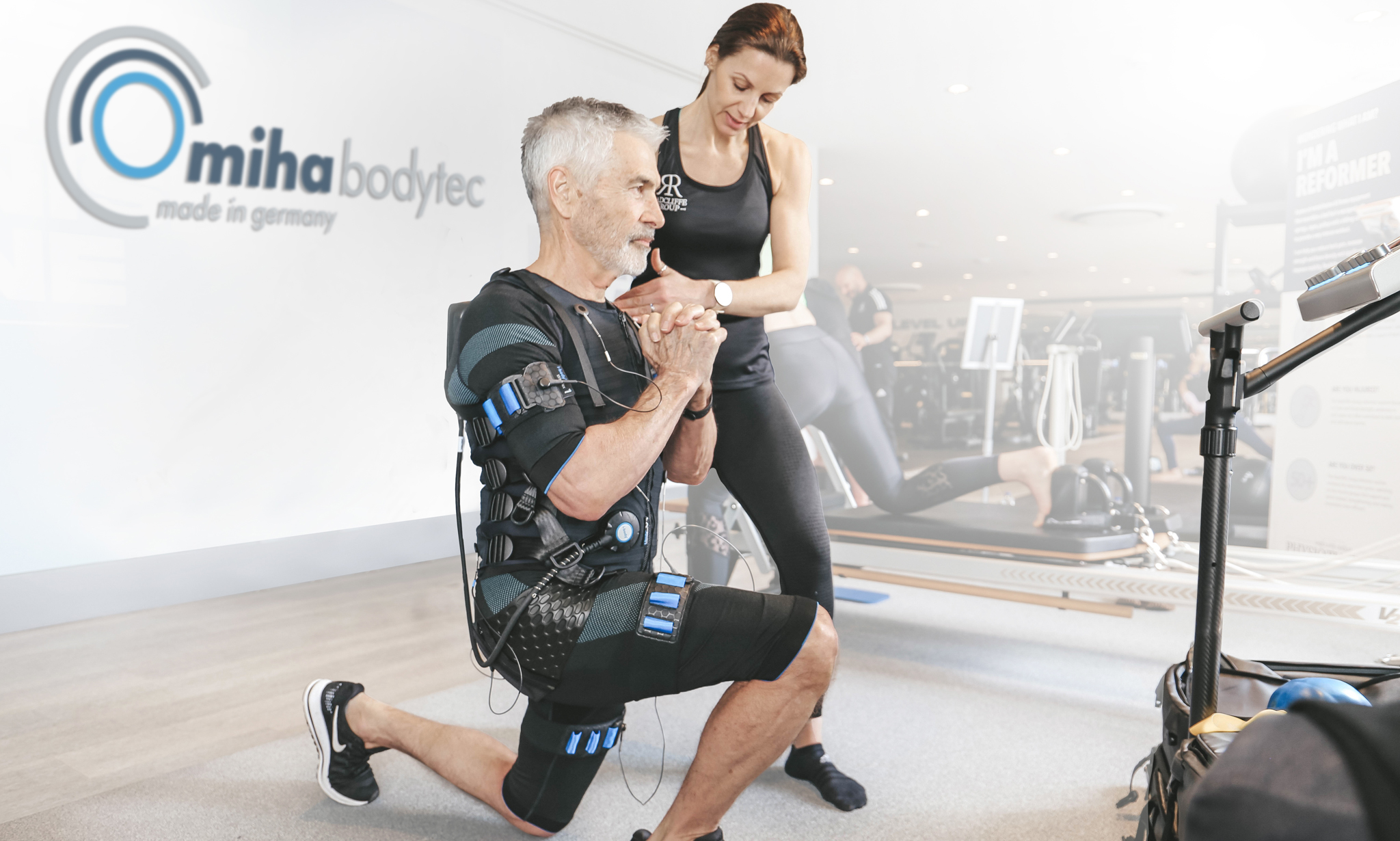
EMS training can deliver strength training in a non-intimidating way / photo: Miha Bodytec
John Halls
Physical

Photo: Physical / NELSON PHOTOS
Strength and conditioning was once the domain of elite athletes, but now it’s front and centre of gym floors.
Where once there were rows of treadmills, now we have functional zones, lifting stations, modular rigs with integrated DAPs. These are the gym floor centrepiece for many big box operators and also tend to be the busiest areas of the gym.
Bars and plates haven’t really changed; what’s changed is the way lifting is being creatively inserted onto the gym floor. We’re cutting lifting platform drop zones into the floors of many of our clients, so they’re flush rather than being step-up platforms to remove trip hazards and create more multi-use space.
How can operators improve their strength offering?
Operators can make strength more accessible by creating zones that are designed to catch the eye, with a buzz about them that makes them inviting.
Make it a key part of inductions. Then it’s about programming and kit selection.
Functional zones don’t have to be about heavy lifting: at their best, they’re playgrounds for small group training – predominantly resistance-based – where instructor-led sessions take people through workouts that can be modified to suit all ages, fitness and experience levels and physical needs.
It’s about moving in natural ways using a wide range of smaller pieces of kit – or even just bodyweight – with equipment simply adding a degree of challenge. The focus is on being strong and fit for life, not being a weightlifter.
Where have you seen strength done well?
Mytime Active (www.mytimeactive.co.uk) offers junior lifting clinics that teach 11- to 15-year-olds to lift safely and effectively, as enhanced strength supports young people in their day-to-day activities, improving performance and helping prevent injury.
Darren Anderson, principal fitness and wellbeing manager has told me that they’re planning a gym floor where the strength to cardio ratio will be 75:25. They plan to double the free weights area, increase the number of squat racks and lifting platforms, incorporate functional training, add more plate-loaded kit and potentially add pneumatic resistance.”
John Halls is MD at Physical
Mytime Active is planning a new gym floor where the strength to cardio ratio will be 75:25
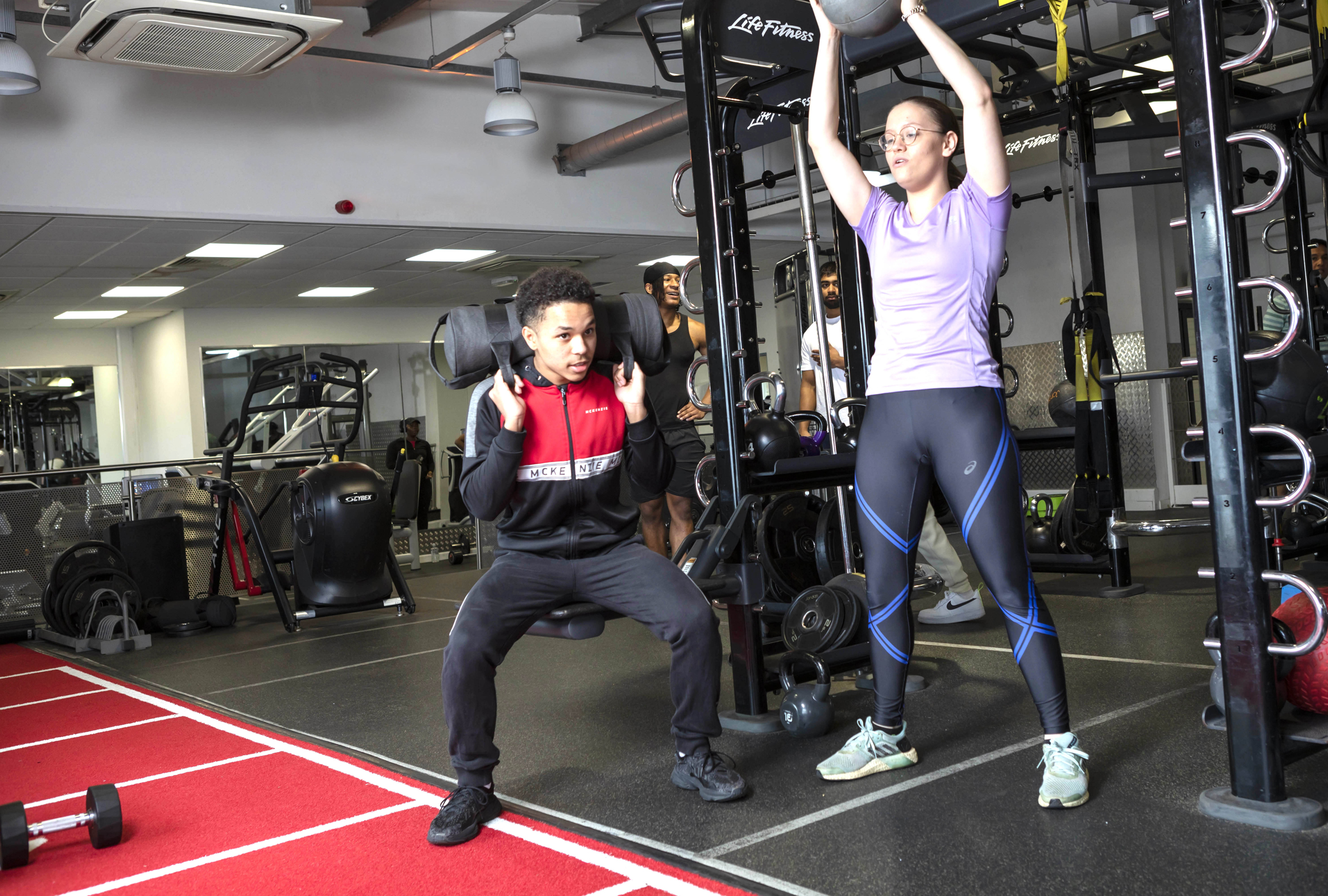
Mytime Active runs junior lifting clinics to tech young people to lift safely / iphoto: mytime active
James Smith
Speedflex

photo: Speedflex
I’ve seen a shift over the last few years in what operators require and expect when requesting a gym floor design. This previously meant rows of CV and pin-selected strength machines with smaller free weights and functional areas, but the shift is towards zoning the gym floor, dedicating more space and focus to larger free weight and functional training zones, with CV and pin-selected machines still valuable and required, but on a slightly lesser scale.
This may be in line with government recommendations but more importantly it’s occurred because operators are listening to their members’ requirements and taking note of current trends. As a result, the equipment has changed towards items that can be used by all ages and abilities.
How can operators improve?
We believe Speedflex is one of the most inclusive and accessible forms of strength training available.
Because it delivers isokinetic resistance, it instantly responds to the force of the user, meaning a deconditioned individual can use it as safely and effectively as an elite athlete, without any need to adjust settings.
For this reason, we’ve found Speedflex machines being purchased to be incorporated into small group training classes and dedicated HIIT zones on the gym floor. These are coach-led at certain times of the day, which has really helped to encourage all demographics and abilities to participate in strength training and gain the benefits.
Can you share an outstanding example?
The Fortis Powered by Speedflex studios that Everyone Active (www.everyoneactive.com) has been adding to its sites. By using Speedflex and Myzone to run these classes, people of all abilities can train alongside each other in an inclusive, safe, yet challenging environment to get the most out of themselves and their time in the session.
James Smith is director of sales at Speedflex
There’s been a shift towards zoning the gym floor
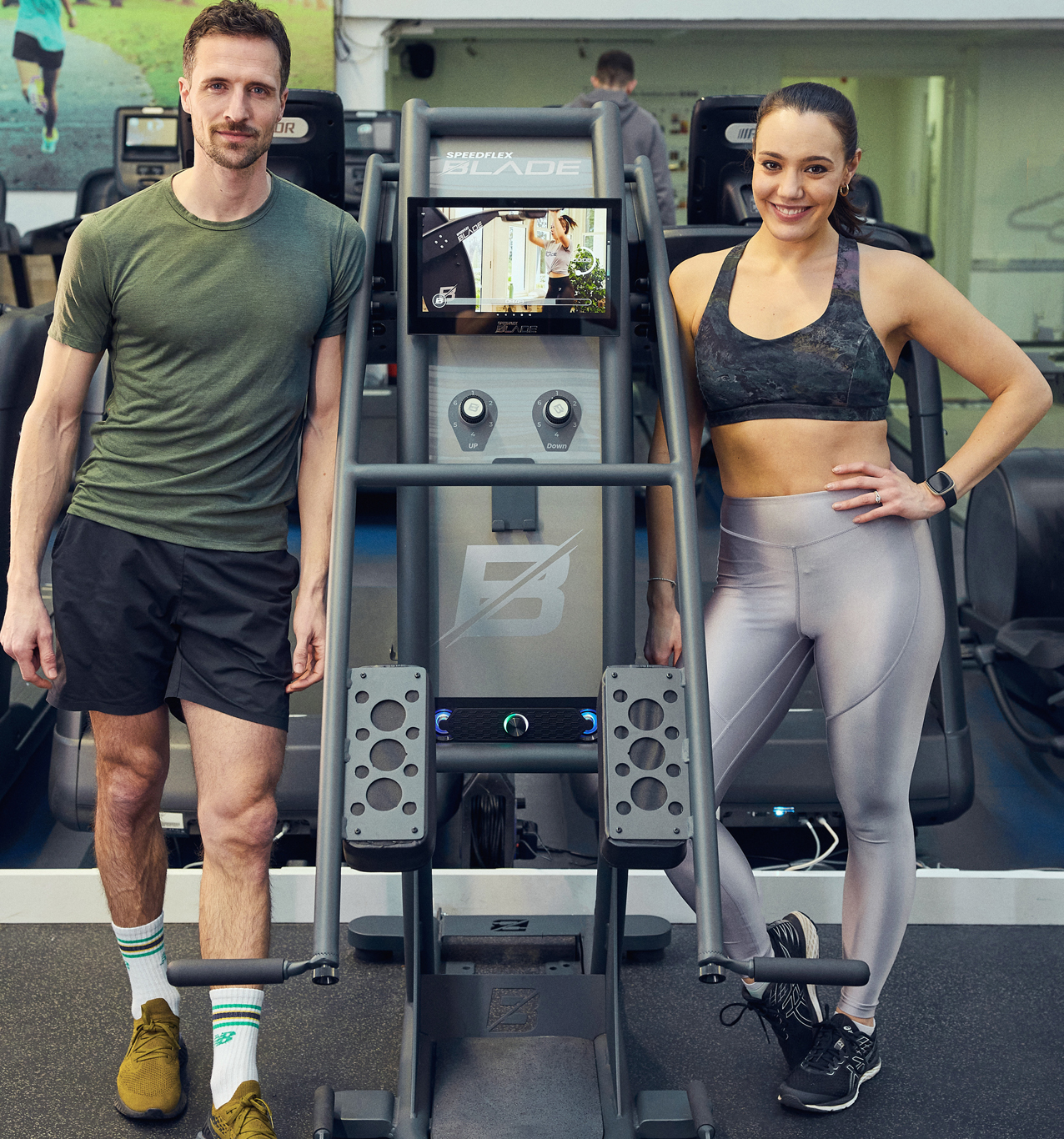
Speedflex has been working with Everyone Active / photo: action group
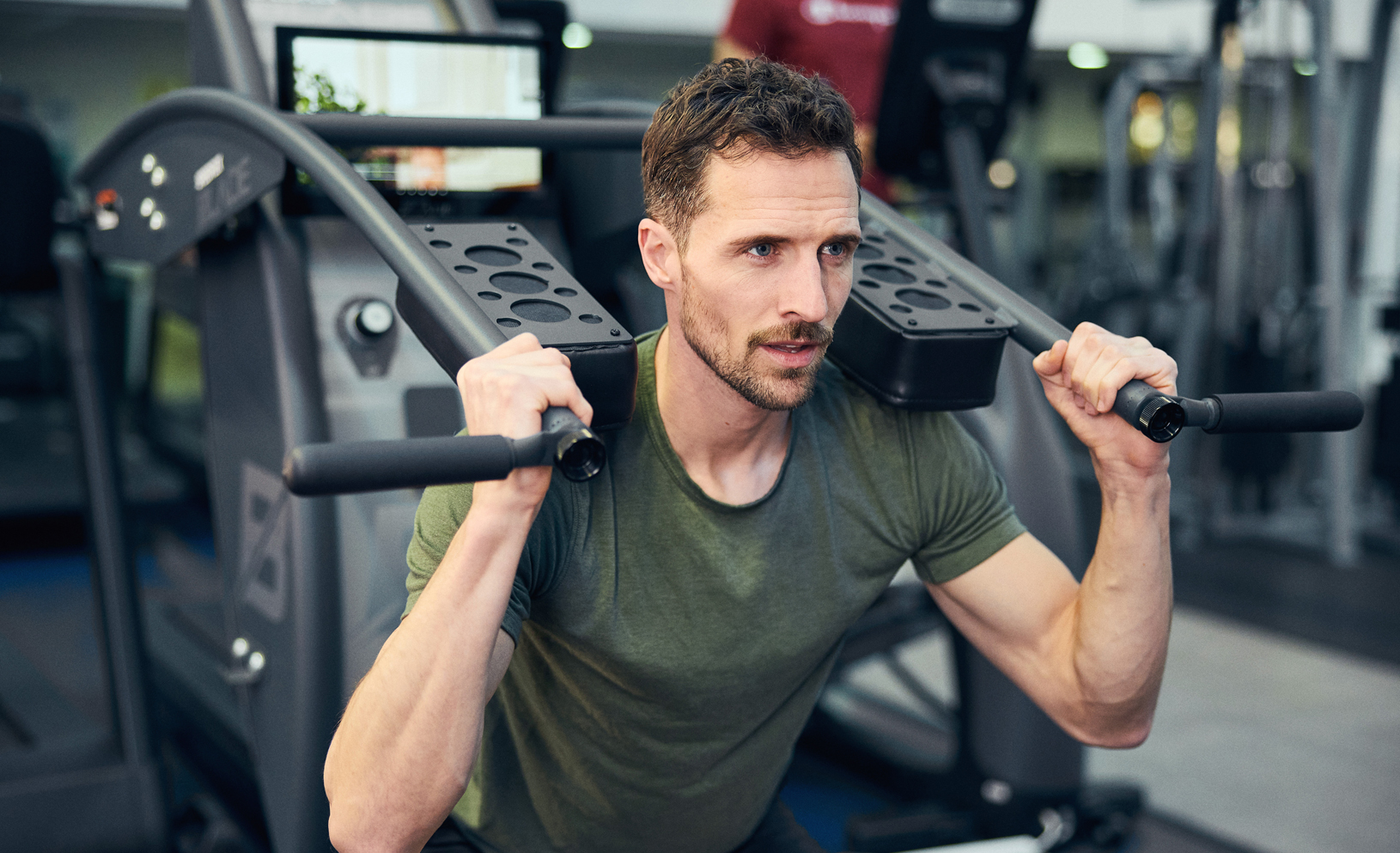
Photo: action group
Chris Porrino
Matrix Fitness UK
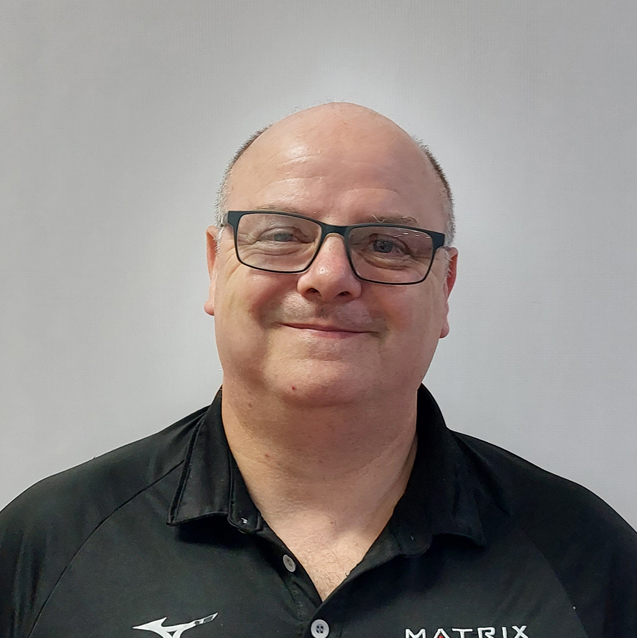
photo: Matrix Fitness UK
Operators have taken on the government guidelines about strength training and have started to change their gym layouts, equipment mix and programming.
Although we’ve seen an explosion of focus on strength training across all sectors, we’ve noticed it has been especially apparent in the local authority and trust sector.
Both small group strength training and strength and conditioning training spaces are now popular, with these areas being accessed by all demographics.
Regardless of age, gender or ability, it really doesn’t matter what the individual is working towards, strength is now the main area of training that’s delivered to the people within clubs, gyms and facilities countrywide.
What advice do you have for creative change?
Operators can work more closely with suppliers, clubs and organisations to cater to the needs of members of sports clubs and those on aspiring athlete programmes; this is where best practice strength programmes can be extremely impactful and deliver success.
There’s also a huge opportunity to better deliver strength training to audiences such as beginners, those with low-levels of fitness, adolescents, those on exercise referral programmes and people in active ageing groups. This is where strength training – done properly – can make a real impact on people’s lives.
Where have you seen strength training done well?
A fantastic example is an installation we did at Salt Ayre Leisure Centre (www.lancaster.gov.uk/salt-ayre-leisure-centre), which is run by Lancaster City Council.
This underwent a full refurbishment of two brand new training areas for members which were fully equipped with a suite of strength training equipment, creating an impressive showcase of a best-in-class strength offering.
The team were keen to listen to customer demand, expand the offering and boost the experience, while also attracting new members. Since the install, membership numbers and member engagement have increased significantly.
Chris Porrino is area sales manager at Matrix Fitness UK
There’s a huge
opportunity to deliver
strength training
to audiences such
as beginners and
those on exercise
referral programmes
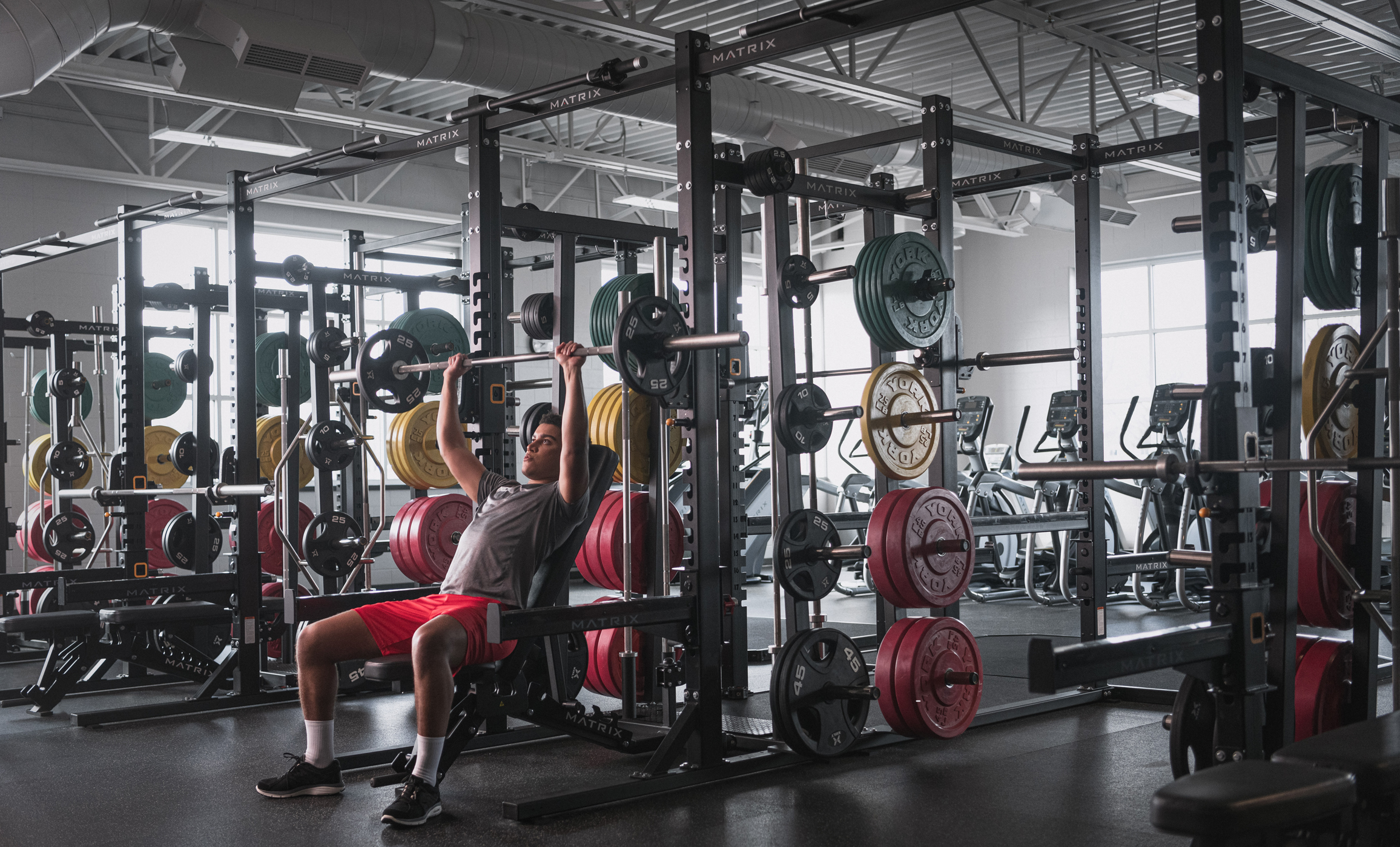
Strength training is attracting all demographics / photo: Matrix Fitness UK
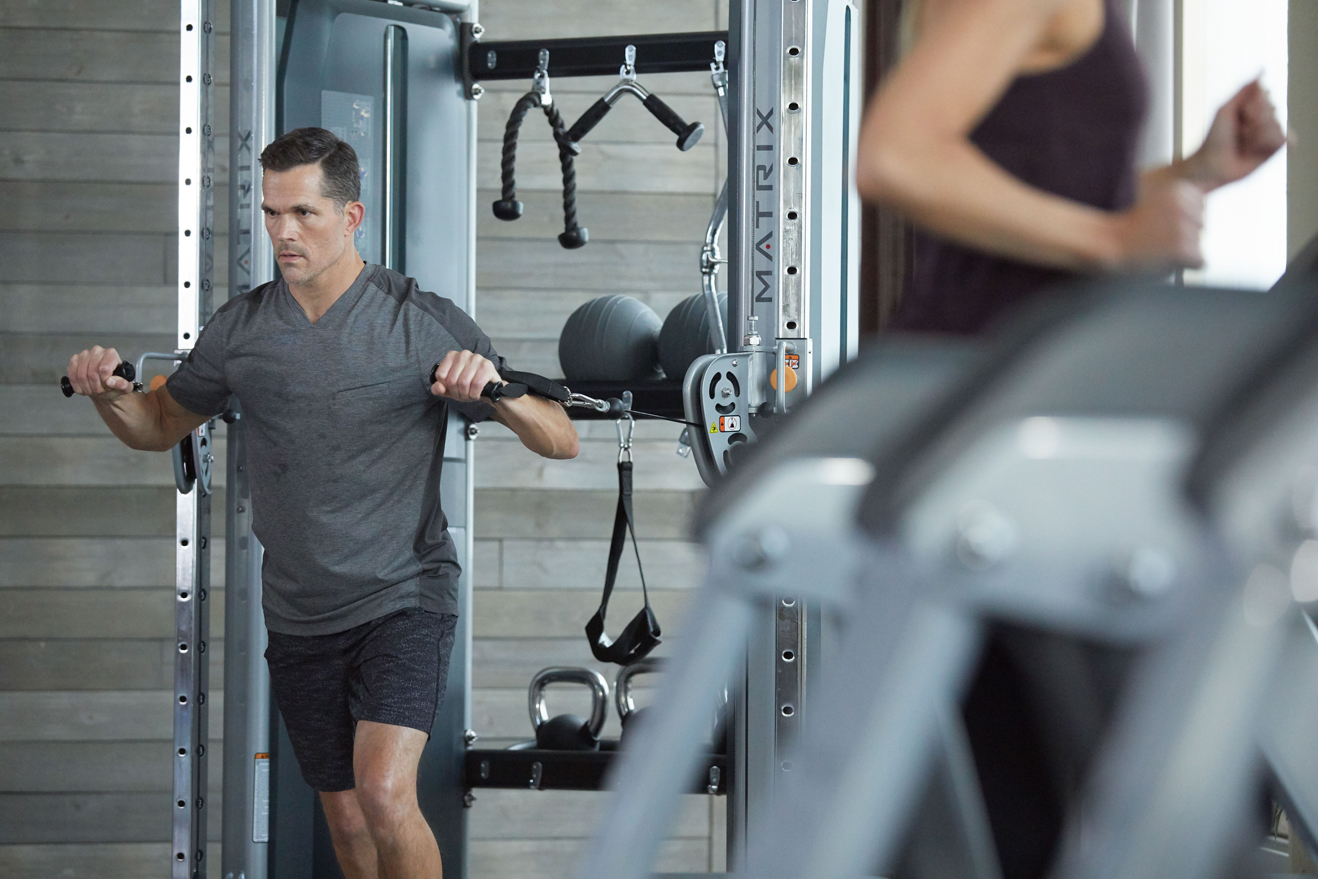
Strength training can make a real impact on people’s lives / Photo: Matrix Fitness UK
|
|
 |
| Originally published in Health Club Management 2023 issue 8
|
|
 |
|
